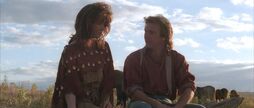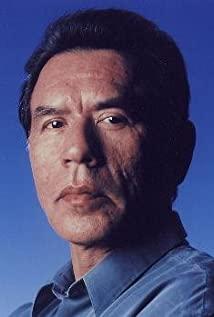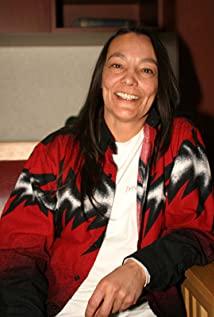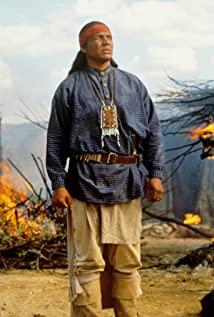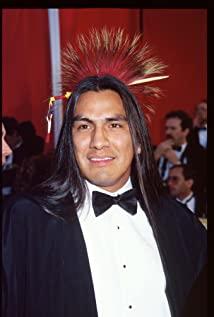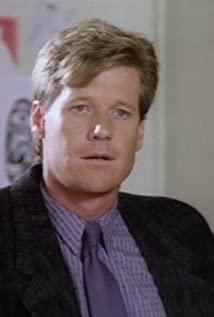"The history of American development is a history of Indian blood and tears" Washington March 17 news, this year is the 400th anniversary of the "Mayflower" landing on the North American continent, including the United States and the United Kingdom will be held throughout the event to commemorate this event. American media commented that, looking back on history and reality, the landing of the "Mayflower", a landmark event in American history, was the beginning of a tragic era for American Indians. From expulsion, slaughter and forced assimilation in history to systemic poverty and discrimination today, the Indians who were originally the masters of this continent have become increasingly weak in American society. The Port of Plymouth, UK, where the "Mayflower" departs, will hold a series of commemorative events this year. The organizers announced a few days ago that they will invite more than 30 American Indian tribal artists to display Indian characteristic art locally in July as part of the Plymouth Harbor commemorative event. The organizer said: "This allows us to look at the impact of Western colonialism on the North American continent from the perspective of the Indians." The Atlantic Monthly commented that, looking back on the 400-year history of Western colonization in North America, it is a lesson for American Indians. An out-and-out "Road of Blood and Tears". "Most of the Indian reservations are remote, inconvenient in infrastructure, and lack the basic ability to develop the economy." The National Museum of American Indians stands next to the Capitol in Washington, showing the tragic experience of the Indians in the past 400 years in the form of words, pictures and objects . According to the museum's website, when faced with an uninvited guest on the "Mayflower", the Indians showed their hospitable nature. With their help, the white colonists settled down and got a bumper harvest, a day they celebrated with the Indians that became known as Thanksgiving. However, since then, the white colonists have forced the Indian tribes to sign one unequal treaty after another through war and deception, and seized a lot of land from the Indians. According to estimates from the U.S. Census Bureau, as of the end of 2018, there were 5.7 million Indians in the United States, about 2% of the total population, and 22% of them lived on Indian reservations. These reservations are mainly located in the barren central and western regions, the largest area is about 65,000 square kilometers, and the smallest is only 0. 5 square kilometers. Before the arrival of white colonists, Indians were almost everywhere in the United States, but now they are hard to find in major cities on the east and west coasts. "Our cry is for peace, let it go on. This peace must last forever. May our sons be yours, and your sons ours." Inside the National Museum of the American Indian, All About American Indian Tribes The words of the female chief of the Rockies, Nancy Ward, in 1781, were the first to come to mind, expressing the strong desire of the Indians for peaceful coexistence with whites. However, Ward's wish did not come true. Before the arrival of white colonists in 1492, the land was estimated to be home to an estimated 5 million Indians, the exhibit shows. During the nearly 100 years of the 19th century, the American army expelled and killed Indians aggressively through the westward movement, occupied millions of square kilometers of Indian land, and seized countless natural resources. By 1900, there were only 250,000 Indians left in the United States. Shannon Keller, executive director and lawyer of the American Indian Affairs Association, told this reporter: "The recent history of American Indians is a history of colonization and genocide. When the United States was first established, it recognized the independence of Indian tribes. Sovereign government, but then pursued a policy of genocide, ended the Indian system of governance and took away their land. Indian reservations are now mostly remote, inaccessible infrastructure, and lack the basic ability to develop the economy.” “Many U.S. Indian communities are very poor, and some Indian tribes have unemployment rates as high as 85%.” The Pine Ridge Indian Reservation is located in South Dakota, a place unheard of for the vast majority of Americans. The Atlantic has previously visited the reservation and found unemployment is as high as 80 percent, most Indians live below the federal poverty line, and many households have no access to running water or electricity. According to the "Atlantic Monthly" report, because the federally subsidized food is generally high in sugar and calories, the incidence of diabetes here is eight times higher than the national average, and the average life expectancy is only about 50 years old. Young people with nothing to do often seek identity and belonging in a gang culture where alcoholism, fighting and drug use are common. Pine Ridge's plight epitomizes the condition of contemporary American Indians. In terms of education and income, in 2017, only 19.6 percent of Indians over the age of 25 had a bachelor's degree or higher, compared with 35.8 percent of whites, according to the U.S. Administration of Indian Affairs. 21.9% of Indians live below the poverty line, compared to 9.9% of whites. 6%. According to a statistical report released by the Indian Health Service of the U.S. Department of Health and Human Services in October last year, the life expectancy of American Indians is 5.5 years lower than the average American life expectancy, and the incidence rates of diabetes, chronic liver disease and alcohol dependence are respectively the American average. 3.2 times, 4.6 times and 6. 6 times. Two of the five poorest counties in the United States are located on Indian reservations, according to a report released by the NGO "Stronger for American Indian Youth." "Many American Indian communities are very poor, and some Indian tribes have unemployment rates as high as 85 percent." The U.S. government has set aside lands for Indians in desolate, sparsely populated areas that lack water and other vital resources, and where they face significant economic challenges and geographic isolation. American Indians have the lowest employment and high school graduation rates of any ethnic group. More than 60 percent of the road system on Indian reservations is dirt or gravel. The American "Forbes" magazine commented: "The relationship between the federal government and Indian tribes is similar to the relationship between guardian and ward, but in many respects, the federal government has not performed its duties well, causing Indian reservations to become the poorest in the United States. community”. "Our people have been treated like this for hundreds of years, and it's enough." The Atlantic Monthly commented that from historical deportation, slaughter and forced assimilation, to today's overall poverty and neglect, it was originally this The Indians who own the continent have a weak voice in American society. The whole country seems to have forgotten who the first inhabitants of the land were. Some media even described American Indians as a "disappearing race." Dave Archambeau, chairman of the Standing Rock Sioux of the American Indian Tribe, said: "The US government's discrimination against Indians has never stopped, and the history of American development is a history of Indian blood and tears. Our people have suffered this treatment for hundreds of years. Enough is enough!" Shannon Keller said that for the 573 Indian tribes recognized by the federal government, the federal government provides a certain amount of money every year, in fact, as compensation for grabbing Indian land. Beyond that, there is little funding elsewhere. Schools on many Indian reservations have fallen into disrepair and the education system is falling apart. A few states will provide subsidy funds to Indian tribes, but most states will not, because Indians have too little voice in the American political system. There are only four Indian-American congressmen and no senators in the United States. She also said that the greatest expectation of American Indians is social proof. “We are culturally and linguistically diverse, but are often seen not as an ethnic group, but as a political class with limited autonomy based on our treaty with the Commonwealth. The success of this is based on the slaughter and extermination of another race, a historic trauma that still affects us today.” said Lugar, an artist who grew up on an Indian reservation in North Dakota and will be pregnant with painful
View more about Dances with Wolves reviews




